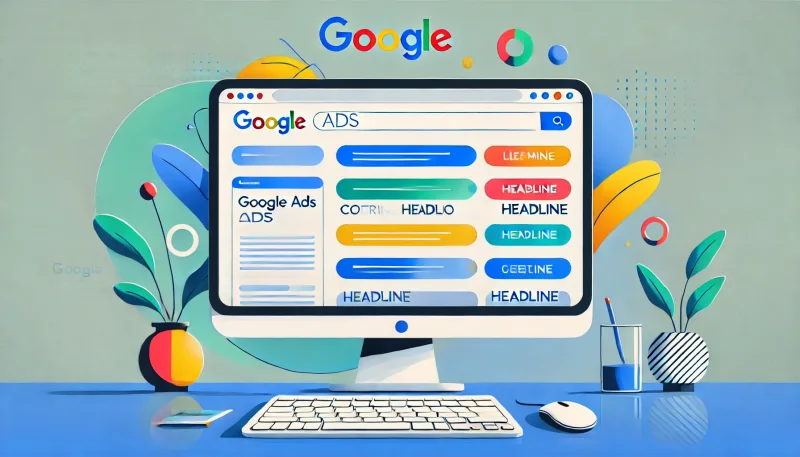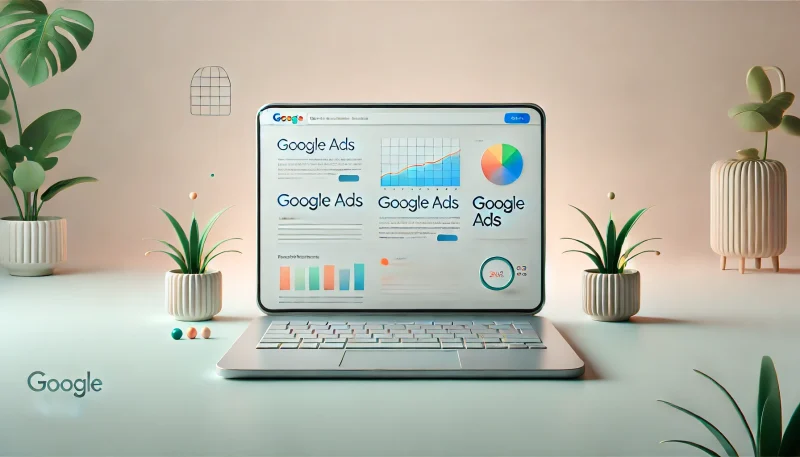Unlock Insights: Find the Answers You Seek on Our Blog
10 Proven Tips to Optimize Your Google Ads Headlines Ideas for Maximum Results
By Evelyn Sterling

Welcome to the Google Ads Headline Optimization Guide!
This guide is here to help you craft compelling, high-performing headlines that maximize the impact of your Google Ads campaigns. Whether you’re a small business owner trying to attract local customers or a digital marketer managing multiple campaigns, optimizing your headlines is a key step toward improving click-through rates and conversions.
In this guide, you’ll learn practical strategies, including how to use relevant keywords, highlight unique value, and create engaging calls to action. With clear examples and actionable tips, you’ll discover how to make your ads more effective while adhering to Google’s best practices. Let’s dive in and explore how optimized headlines can drive better results for your business!
Clarify the Goal of Your Headlines
First Impression Matters
Your headlines are the first thing people see when they encounter your ad. If your headlines grab attention, users are more likely to click, which increases your click-through rate (CTR). Think of your headline like a store window display: if it looks appealing, people will walk in. If it is unclear or boring, they might just pass by. Use simple, direct language that matches what users are looking for. This way, your ad becomes more relevant, leading to a better chance that users will click through and explore what you offer.
How They Impact Quality Score
Google rewards ads that are relevant and engaging. When your headlines match a user’s search intent, it can raise your Quality Score. A higher Quality Score can lead to lower costs per click, saving you money in the long run. It also helps your ads appear more often and at higher positions. In short, well-crafted headlines do more than attract clicks; they show Google that your ad content is valuable for users. This increases both your visibility and your return on investment.
Incorporate Relevant Keywords
Strategic Keyword Placement
Keywords are words or phrases that people type into search engines. When you choose keywords that closely match what your customers are looking for, your ads become more relevant. Start by researching which words your target audience uses most often. You can use free tools like Google Keyword Planner to find these popular terms. Once you’ve identified them, include those keywords in your headlines. However, avoid overstuffing your ad with too many keywords. Keep it clear and natural, so potential customers easily understand your message and are more likely to click.
Use Long-Tail Variations
Long-tail keywords are more specific phrases, often three or more words long. They target a smaller but more focused group of people who know exactly what they want. For example, instead of “running shoes,” a long-tail keyword could be “lightweight running shoes for marathon training.” By using long-tail keywords, you can attract visitors who have a clear intention to buy or learn about your product. This often leads to higher conversion rates because these users are searching for something precise—exactly what you’re offering.
Highlight Your Unique Value
Focus on Benefits
When creating headlines, think about what the user truly wants. Rather than listing product features, show how your product or service makes life easier, saves time, or solves a big problem. For example, instead of saying “Now with 5GB storage,” focus on the benefit: “Store More Photos Without Worry.” By focusing on what users gain, you give them a clear reason to click on your ad. People usually look for solutions, not just fancy details. Make your message about them and what they get out of it.
Differentiation
In a crowded market, you need to stand out. Offer something unique that your competitors don’t have, like a strong guarantee or a special deal. For instance, you can highlight a “30-Day Money-Back Guarantee” or “Same-Day Shipping.” These unique points can tip the scales in your favor because they reduce the risk for the buyer. When users see a promise or benefit they can’t get elsewhere, they’ll be more likely to click on your ad and trust your brand.

Use Compelling Language and CTAs
Action-Oriented Phrasing
Your headlines should push readers to take action right away. Simple calls to action (CTAs) like “Try Now,” “Buy Today,” or “Learn More” are clear and direct. They tell the user exactly what you want them to do next. This approach makes your ad feel more urgent and persuasive. People respond better to clear directions because they know how to get what they’re looking for. When crafting your CTAs, keep the language short, energetic, and easy to understand.
Emotional Triggers
Sometimes, a little urgency can help. Words like “Limited Offer” or “Exclusive Deal” can spark excitement or even a fear of missing out. When users feel they might lose out on something special, they are more likely to act. You can also try phrases like “Ends Soon” or “Today Only” to nudge people toward making a quicker decision. By adding these emotional triggers, you create a sense of scarcity or exclusivity that encourages users to click on your ad before it’s too late.
Leverage Responsive Search Ads and Headline Slots
Multiple Headlines
Responsive Search Ads allow you to provide different headline options for Google to mix and match. This helps your ads show the right message to the right audience. For example, you might use one headline highlighting a discount and another focusing on quality. Google’s algorithm then tests these variations to see which headline performs better with different groups of people. The more relevant your ad is, the more likely it is to catch a potential customer’s eye. By offering multiple headlines, you give Google more chances to show a winning message.
Test & Rotate
A/B testing is essential for finding the best headlines. Start by creating two or more versions of your ads. Change one element at a time, such as a keyword or CTA, so you know exactly what affects performance. Rotate these ads evenly at first to gather data, then see which version has a higher click-through rate or more conversions. Keep the good performers, and pause the ones that aren’t doing well. Over time, continue tweaking your headlines based on the numbers. This process ensures you’re always improving and delivering the most effective message to your audience.
Adhere to Google’s Policies and Formatting
Character Limits
Google Ads typically allows up to 30 characters per headline in expanded text ads. This limit means you must choose your words carefully to make a strong impact. If your headline is too long, it could get cut off, and potential customers might miss the main point of your offer. To avoid this, keep your message short and clear.
Policy Compliance
Google has strict rules to keep ads honest and user-friendly. Make sure your headlines don’t include any false or misleading claims. Stay away from inappropriate or prohibited content, and always double-check Google’s Advertising Policies if you’re unsure. Breaking the rules can lead to your ads being disapproved or even your account being suspended. A clean, compliant ad not only protects your account but also builds trust with your audience.

Track, Analyze, and Optimize
Monitor Key Metrics
Tracking your ad’s performance is the key to success. Focus on three main numbers: click-through rate (CTR), conversion rate, and cost-per-click (CPC). CTR shows how many people clicked your ad after seeing it, helping you understand how appealing your headline is. Conversion rate tells you how many of those clicks turned into sales, sign-ups, or other desired actions. CPC reveals how much you’re paying for each click, which helps you manage your budget. By regularly monitoring these metrics, you can spot what’s working and what isn’t.
Iterative Testing
Testing different versions of your ads helps you find the winning formula. Try out new headlines, CTAs, or keywords and compare their performance. If one version isn’t delivering good results, pause it and focus on the ones that perform well. Then, make small adjustments to those top performers to see if they can do even better. This process of refining and improving your ads over time ensures that you’re always optimizing your campaigns for better results. Remember, small changes can lead to big improvements!
Conclusion
Optimizing your Google Ads headlines is essential for driving clicks, improving Quality Scores, and reducing ad costs. Focus on making your headlines relevant, benefit-driven, and engaging. Use keywords strategically, highlight your unique value, and include clear calls to action. Leverage multiple headline variations, track key performance metrics, and continuously test and refine your approach. By following these steps, you’ll create ads that not only attract attention but also deliver real results for your business.
AI Tools Categories
Browse all AI tools by category
All AI Tools
229Amazon
5AI Writing Generator
85Article & Content Writing
35Branding & Identity
54Content Generation
170Creative Ideas
32Educational Resources
34E-commerce
14Etsy
6Events & Celebrations
13Facebook
6Gaming & Fun
5Instagram
3Lifestyle & Personal
8LinkedIn
6Marketing & SEO
40Poem & Lyrics Writing
19Professional Documents
31Social Media
44Story & Book Writing
49Text Effects
14TikTok
7Twitter
3Writing Enhancement
36YouTube
11
Highly rated and most popular AI tools curated by our experts
Recently added AI tools that are gaining traction
- AI Post Generator

- AI Bullet Point Generator

- AI Discussion Post Generator

- AI 2 Weeks Notice Letter Generator

- AI Content Creation Ideas Generator

- AI Radio Ad Script Generator

- AI Podcast Script Generator

- AI Resume Objective Generator

- AI Resume Headline Generator

- AI Password Generator

- AI Snapchat Caption Generator

- AI Snapchat Username Generator

- AI Pinterest Board Name Generator

- AI LinkedIn Experience Description Generator

- AI Twitter Hashtag Generator

- AI YouTube Short Idea Generator

we prioritize displaying the latest content closely related to the current blog post.







